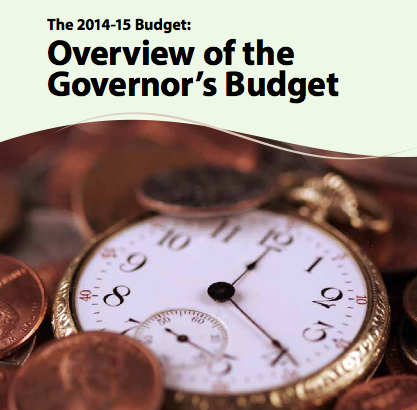
Although a lot can change between now and May, when Brown revises his budget, “Nevertheless, we advise state leaders to plan for the significant possibility that revenue estimates for 2013-14 and perhaps 2014-15 will be higher when they are revised in mid-May,” the LAO said in its 44-page “Overview of the Governor’s Budget.”
Any increase in the General Fund will be continued good news for education. For every $1 billion more in revenue in the current fiscal year, at least half must go toward K-12 schools and community colleges under Proposition 98, the formula that determines money for education. And if revenues surpass Brown’s projections in 2014-15, an even larger percentage would be channeled to K-12 and community colleges, Edgar Cabral, principal fiscal policy analyst with the LAO, confirmed Monday.
But with state revenues very much dependent on receipts from the volatile capital gains tax, which is tied to returns on the stock market and the income of the state’s wealthiest 1 percent, the LAO urged caution in further raising operating budgets. Instead, it recommended the “prudent mix of one-time and ongoing spending” that Brown proposes in his 2014-15 budget.
Additional revenue could embolden legislators to argue for phasing in a second year of universal transitional kindergarten for all 4-year-olds – a priority of Democratic leaders. Or it could strengthen the call for more one-time money for preparing for the Common Core standards. Brown added $1.25 billion for Common Core in the last May budget revision; in last week’s budget he proposed adding only $46 million, to pay for new Common Core tests.
Brown’s budget includes $11.8 billion in increased Prop. 98 spending next fiscal year, with about a third of that coming from recalculations from previous years’ revenue. And he wants to use more than half of that to pay off deferrals, late payments to school districts. The LAO liked that idea: “By retiring the $6.2 billion in outstanding K-14 deferrals, the Governor’s plan would eliminate the largest component of the school and community college wall of debt.”
Brown would channel $4.7 billion more to ongoing budgets, with nearly all of it for the Local Control Funding Formula, the new K-12 school finance system that gives school districts more spending authority.
The LAO says per-student spending would rise from $7,936 in the current fiscal year to $8,724 in 2014-15—an increase of $788 or 10 percent. (Brown’s budget said per-student spending would rise from $8,469 to $9,194 next year, but that includes eliminating deferrals payoff, which is a one-time debt payoff, not a programmatic increase, Cabral pointed out.)
The LAO praised Brown’s general approach to the state budget, including the focus on deferrals and other ways to lower the state’s “wall of debt.”
“The Governor’s emphasis on debt repayment is a prudent one. Overall, the Governor’s proposal would place California on an even stronger fiscal footing, continuing California’s budgetary progress,” the LAO said.
But the LAO also disagreed on some points and suggested alternatives on education spending:
- Start squirreling away now to contribute to teacher pensions: Brown proposed negotiating a deal with lawmakers, teachers and districts over the next year to increase payments, starting in 2015-16, to the California State Teachers’ Retirement System or CalSTRS. The pension fund for teachers and administrators remains $80 billion underfunded, which could require as much as $5 billion more in annual contributions. The LAO suggested getting a head start now by setting aside some of higher-than-expected state revenue for future payments into CalSTRS;
- Give Brown’s plan for a rainy day fund a hard look: In 2010, the Legislature passed a proposed constitutional amendment, ACA 4, for the November 2014 ballot. Brown want to strengthen it to sock away more money when times are good, limit the amount of reserves that can be siphoned off at any one time, and start feeding the reserve when receipts from the tax on capital gains amount to more than 6.5 percent of general revenue. He also wants to create an even higher reserve within the reserve for Prop. 98 revenue, which tends toward bigger gyrations within the budget. The LAO suggests that the Legislature not lock into the 6.5 percent threshold and gain a better understanding of how the rainy day fund and Prop. 98’s requirements would work together.
- Avoid a hard and fast LCFF funding commitment: Brown has projected it will take eight years to phase in the LCFF. School districts and advocates for disadvantaged students have praised Brown’s commitment to the new finance system but worry that it might not be a priority if there’s a recession or after another governor is elected. Brown implies in his budget message that he will propose that LCFF be guaranteed a set percentage of Prop. 98 revenue. (This year, the initial year of LCFF, it makes up about 80 percent of Prop. 98 spending.) The LAO recommends that the Legislature reject this idea to keep its options open.
John Fensterwald covers state education policy. Contact him and follow him on Twitter @jfenster. For our full state budget coverage, go here. Sign up here for a no-cost online subscription to EdSource Today for reports from the largest education reporting team in California.
To get more reports like this one, click here to sign up for EdSource’s no-cost daily email on latest developments in education.